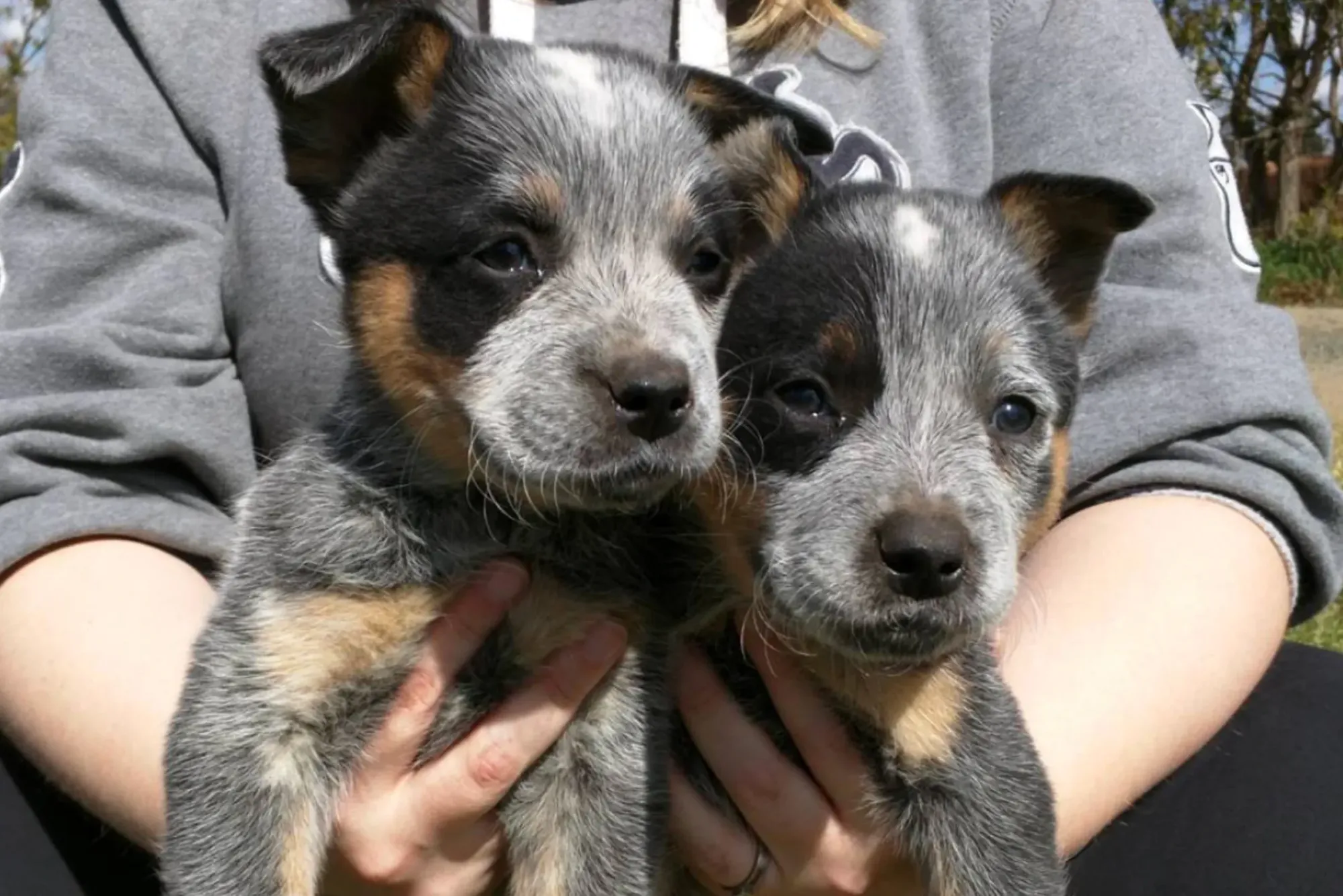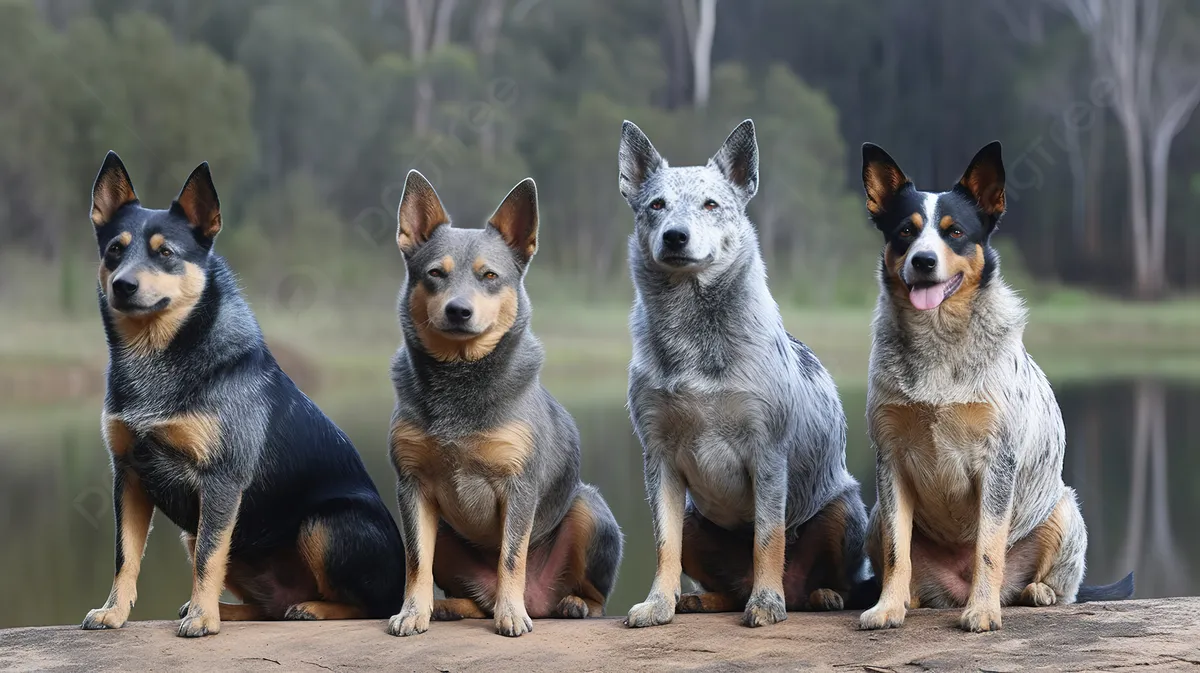Have you ever found yourself intrigued by the distinctive yet subtle differences between dog breeds? In the canine world, two breeds that often find themselves in the spotlight are the Queensland Heeler and the Australian Cattle Dog. These breeds, although sharing some similarities, have unique characteristics that set them apart. Understanding these differences is crucial for anyone considering adding one of these intelligent and loyal companions to their family.

Origins and History
Delving into the roots of the Queensland Heeler and the Australian Cattle Dog unveils a rich tapestry of history steeped in the demands of Australia's rugged landscapes. The Queensland Heeler, also known as the Australian Stumpy Tail Cattle Dog, emerges as a product of the harsh conditions of the 19th-century Queensland outback. Its breeding was finely tuned to the rigors of herding cattle across vast expanses, creating a resilient and industrious working dog.
In contrast, the Australian Cattle Dog shares a parallel history, evolving to meet the demands of expansive cattle ranches. Developed through selective breeding that included the infusion of Dingo blood, this breed's tenacity and intelligence were honed for the relentless task of managing livestock in challenging terrains.
Understanding the historical context of these breeds is essential for appreciating the foundation on which their characteristics are built.

Physical Characteristics
The Queensland Heeler and the Australian Cattle Dog, although sharing a common purpose, display nuanced disparities in their physical attributes. The Queensland Heeler stands as a medium-sized, well-built canine. Its coat, often adorning shades of blue or red, is short and dense, providing protection without impeding agility. The distinctive feature is its stumpy tail, contributing to its unique appearance.
In comparison, the Australian Cattle Dog boasts a slightly larger frame. Its coat, a harmonious blend of blue and black hairs, not only adds to its aesthetic appeal but also serves as a protective layer against the elements. The breed's physical stature reflects its role as a robust and enduring herding companion.
Temperament and Behavior
Temperament and behavior form the core of what distinguishes these breeds as individual personalities within the canine world.
The Queensland Heeler exudes a sense of alertness and loyalty. This breed is inherently reserved, forming strong bonds with its family and displaying a protective nature. Known for its intelligence, the Queensland Heeler navigates its surroundings with a calculated demeanor, making it an excellent choice for those seeking a vigilant companion.
Conversely, the Australian Cattle Dog reveals a different facet of temperament. Intelligence is a hallmark, but independence is its defining trait. This breed showcases a work ethic that aligns with its herding heritage. It is not merely a follower but a decision-maker in the field, exhibiting an assertive and often bold personality.
Trainability
The trainability of the Queensland Heeler and the Australian Cattle Dog offers a fascinating insight into their cognitive prowess and willingness to work in collaboration with their human counterparts. The Queensland Heeler, characterized by its intelligence and receptiveness, stands as a breed that tends to excel in training endeavors. Quick to grasp commands and eager to please, these dogs respond positively to consistent and positive reinforcement.
Conversely, the Australian Cattle Dog, while possessing a commendable intellect, may present a slightly more independent streak. This independence is not indicative of an inability to learn but rather a demonstration of a thoughtful and discerning nature. Effective training strategies for the Australian Cattle Dog often involve a firm yet patient approach, establishing a clear hierarchy within the human-canine dynamic.
Understanding the intricacies of each breed's trainability is fundamental for fostering a harmonious relationship built on mutual understanding and respect.
Exercise Requirements
The exercise needs of both the Queensland Heeler and the Australian Cattle Dog are intrinsically tied to their historical roles as herding dogs, demanding physical prowess and stamina. The Queensland Heeler, with its robust build and energetic disposition, thrives on regular and vigorous exercise. Adequate daily physical activity is not merely a preference but a necessity to prevent boredom-related behaviors that may manifest in less active environments.
Similarly, the Australian Cattle Dog exhibits a high level of energy, necessitating a substantial commitment to exercise. Long walks, interactive play, and engaging activities are vital components of meeting the breed's physical and mental stimulation requirements. A lack of exercise for either breed can lead to undesirable behaviors stemming from pent-up energy, underscoring the importance of an active lifestyle.
Prospective owners must be prepared to invest time and effort into fulfilling the exercise needs of these breeds to ensure their overall well-being and contentment.
Health Concerns
As with any breed, understanding potential health concerns is paramount for responsible ownership. Queensland Heelers, although generally robust, may be predisposed to certain genetic conditions. These may include hip dysplasia, progressive retinal atrophy, and deafness. Regular veterinary check-ups, coupled with a proactive approach to health monitoring, are essential to address any emerging issues promptly.
Similarly, Australian Cattle Dogs may encounter health challenges, emphasizing the significance of regular health assessments. Issues such as hip dysplasia, progressive retinal atrophy, and hereditary deafness may be observed. Responsible breeding practices and routine health screenings contribute significantly to mitigating the risk of these conditions.
Owners should be vigilant in monitoring their canine companions for any signs of discomfort or deviation from normal behavior, fostering a proactive approach to health management.
Living Conditions

Understanding the living conditions that best suit the Queensland Heeler and the Australian Cattle Dog is pivotal for fostering environments where these breeds can thrive. The Queensland Heeler, adaptable by nature, can acclimate to various living situations provided that their need for physical activity is met. While they can adjust to apartment living, they truly flourish in homes with ample outdoor space. A secure yard allows them to indulge their herding instincts, contributing to their overall contentment.
On the other hand, the Australian Cattle Dog, though adaptable, leans towards environments with expansive spaces. Their history as herding dogs implies a certain affinity for wide-open areas. Homes with yards or access to parks align more closely with their natural inclinations and provide opportunities for the rigorous exercise they require.
Prospective owners must evaluate their living situations critically, considering the space available and the commitment to providing the necessary exercise to ensure the well-being of these energetic breeds.
Grooming and Maintenance
Grooming and maintenance requirements for the Queensland Heeler and the Australian Cattle Dog are influenced by their coat characteristics, and understanding these needs is integral to responsible pet care.
The Queensland Heeler, with its short and dense coat, demands a moderate level of grooming. Regular brushing helps manage shedding and keeps their coat in optimal condition. As a bonus, this activity serves as a bonding opportunity between the happy dog and its owner.
Conversely, the Australian Cattle Dog, with its double coat, may require more frequent grooming to control shedding, especially during seasonal changes. Brushing should be thorough to remove loose hair and minimize the risk of matting.
Both breeds benefit from routine checks of ears, eyes, teeth, and nails. Regular grooming not only enhances the physical well-being of the dog but also provides an avenue for early detection of potential health issues.
Feeding Guidelines
Feeding guidelines play a crucial role in the health and vitality of the Queensland Heeler and the Australian Cattle Dog. Both breeds, known for their high energy levels, require a balanced and nutrient-rich diet to support their active lifestyles.
For the Queensland Heeler, a diet tailored to their size, age, and activity level is essential. Adequate protein and healthy fats contribute to muscle maintenance and overall energy. Regular monitoring of weight is advisable to adjust portion sizes as needed.
Similarly, the Australian Cattle Dog benefits from a diet rich in quality proteins and essential nutrients. Their feeding requirements may vary based on factors such as age, activity level, and overall health. Owners should be attuned to their dog's nutritional needs and adjust feeding accordingly.
Portion control is vital for both breeds to prevent obesity, a condition that can lead to various health issues. Regular consultations with a veterinarian can aid in developing a customized feeding plan that aligns with the specific needs of each individual dog.
Suitability as Pets
The suitability of the Queensland Heeler and the Australian Cattle Dog as pets is contingent upon a prospective owner's understanding of their distinct traits and requirements. The Queensland Heeler, with its loyalty, intelligence, and protective instincts, can make an excellent family companion. Their adaptable nature allows them to integrate seamlessly into households with a range of living situations, provided their need for exercise and mental stimulation is met.
On the flip side, the Australian Cattle Dog, characterized by its independent nature and strong work ethic, is well-suited for owners seeking an active and engaged partner. While they can thrive in family settings, the Australian Cattle Dog requires owners committed to providing both physical and mental challenges to prevent boredom.
Prospective owners must evaluate their lifestyle and commitment to meeting the needs of these breeds before considering them as pets. Adequate exercise, mental stimulation, and consistent training are non-negotiable aspects of responsible ownership.

Popularity and Recognition
In the realm of dog enthusiasts and competitions, both the Queensland Heeler and the Australian Cattle Dog have garnered recognition for their unique attributes. The Queensland Heeler, with its distinctive appearance and versatility, has gained popularity among those seeking a loyal and agile companion. Their recognition in various dog events underscores their adaptability and trainability.
Similarly, the Australian Cattle Dog has secured a notable place in the canine world, earning accolades for its herding skills and intelligence. Their presence in competitions and their roles as working dogs contribute to their standing in the dog community.
Potential owners should be aware of the breeds' popularity, considering whether their characteristics align with the expectations and preferences of the individual or family.
Cost Considerations
The decision to bring a Queensland Heeler or an Australian Cattle Dog into one's home involves financial considerations beyond the initial acquisition cost. Queensland Heelers, with their growing popularity, may come with a price tag influenced by factors such as breeder reputation, lineage, and geographical location. Prospective owners should be prepared for this upfront investment.
Similarly, Australian Cattle Dogs, recognized for their herding prowess, may also command a certain financial commitment. Beyond the purchase cost, owners must factor in ongoing expenses such as quality nutrition, veterinary care, grooming supplies, and potential training classes.
Understanding the financial implications of dog ownership, both immediate and long-term, is crucial for individuals or families contemplating the addition of these breeds to their households.
Breeding Practices
Responsible breeding practices form the cornerstone of maintaining the health and integrity of the Queensland Heeler and the Australian Cattle Dog breeds. Reputable breeders adhere to ethical standards, prioritizing the well-being of the dogs over financial gain. This involves thorough health screenings to minimize the risk of hereditary conditions and meticulous attention to the overall genetic health of the breeding pairs.
Prospective buyers should seek breeders who are transparent about their practices, readily providing health clearances and information about the lineage. Responsible breeding aims not only to preserve the breed standard but also to contribute positively to the overall health and temperament of the breed.
Conversely, potential breeders must educate themselves about the intricacies of the breeding process, emphasizing quality over quantity. This includes a commitment to the lifelong welfare of the dogs produced.

Conclusion
In conclusion, the difference between Queensland Heeler and Australian Cattle Dog extends beyond their appearances. Understanding their origins, temperaments, and specific needs is essential for making an informed decision when choosing a canine companion. Whether you're captivated by the agility of the Queensland Heeler or the independent spirit of the Australian Cattle Dog, both breeds bring unique qualities to the table.
FAQs
- Are Queensland Heelers and Australian Cattle Dogs good with children?
- Both breeds can be excellent with children, but early socialization and training are crucial.
- Do Queensland Heelers and Australian Cattle Dogs get along with other pets?
- Proper introductions and socialization can help, but individual temperament plays a role.
- How much exercise do Queensland Heelers and Australian Cattle Dogs need daily?
- Both breeds require at least 60 minutes of exercise per day to stay physically and mentally healthy.
- Are there specific health tests recommended for these breeds?
- Regular check-ups and breed-specific health tests are advisable to catch potential issues early.
- What is the average lifespan of Queensland Heelers and Australian Cattle Dogs?
- On average, both breeds live between 12 to 16 years with proper care.




